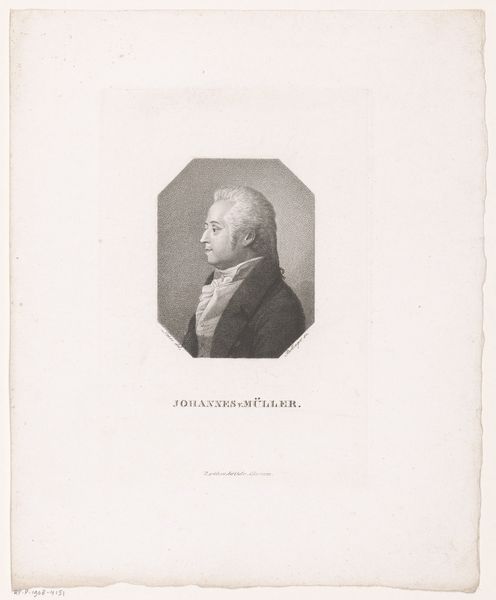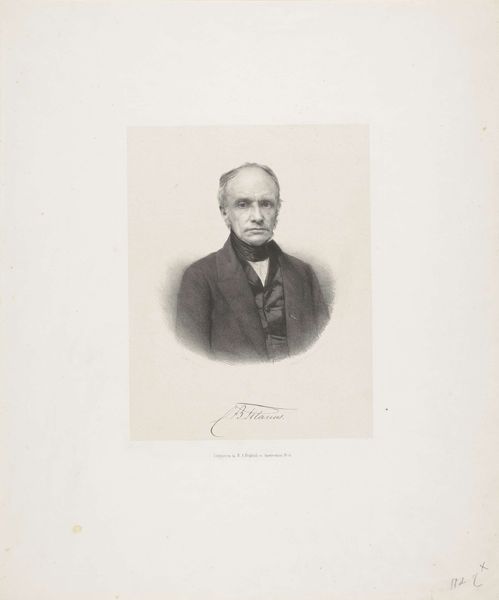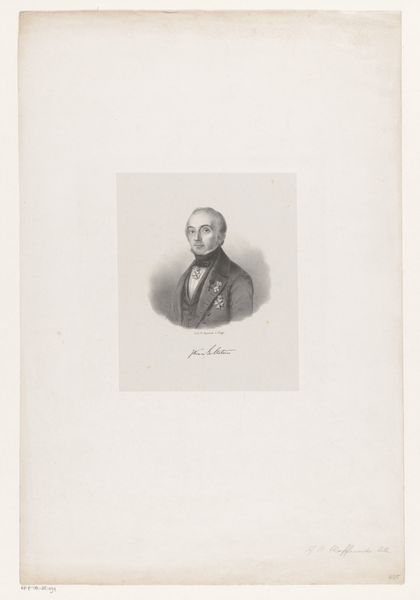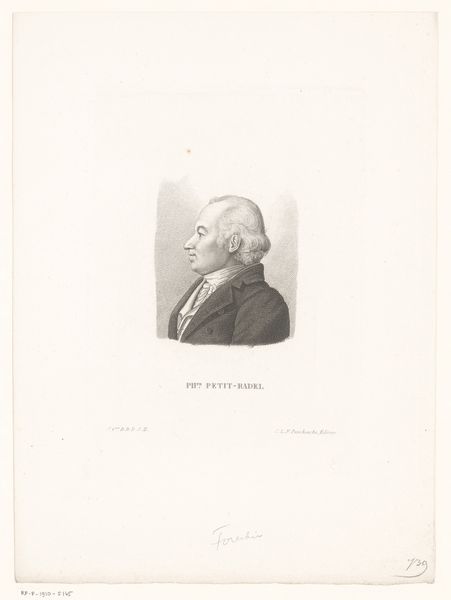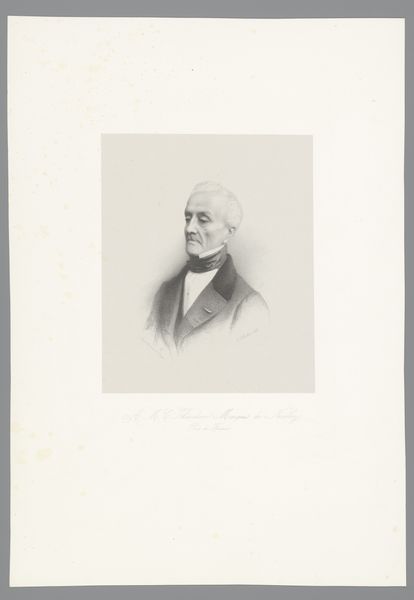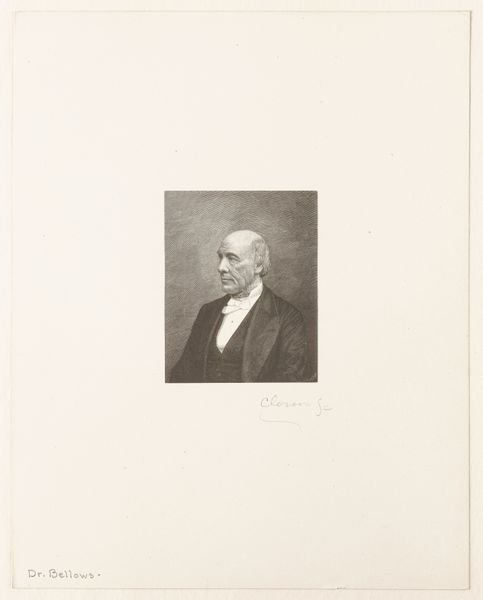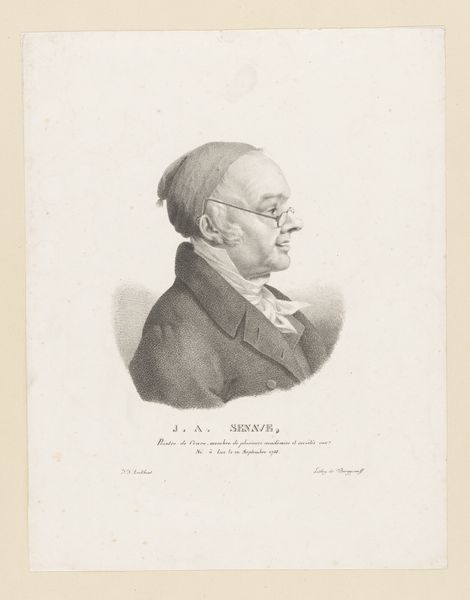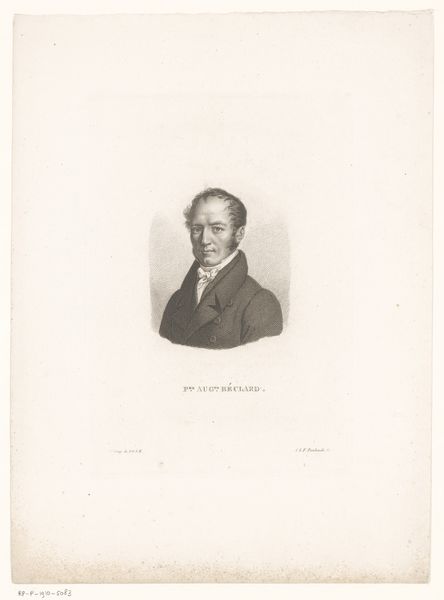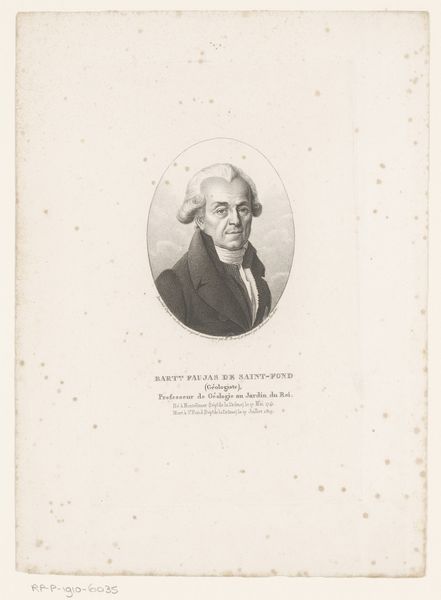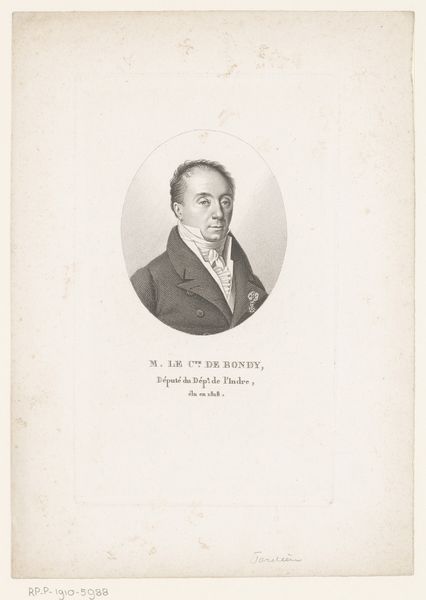
drawing, print, engraving
#
portrait
#
pencil drawn
#
drawing
#
neoclacissism
# print
#
line
#
engraving
Dimensions: height 181 mm, width 125 mm
Copyright: Rijks Museum: Open Domain
Editor: Here we have Friedrich Wilhelm Bollinger’s portrait of Johann Wilhelm Ludwig Gleim, created between 1818 and 1832. The linear precision gives it a sort of stoic gravity. What do you see in this piece? Curator: This engraving of Gleim strikes me as a deliberate construction of identity through visual language. It's not just a likeness; it's an icon. Do you notice how the neoclassical style, with its emphasis on reason and order, informs the depiction? The profile view, the crisp lines, all suggest a man presented as a figure of intellect and virtue. Editor: Yes, that makes sense! The profile does lend him a very Roman, almost statue-like quality. But what about the fact that it is a print? Does the medium itself carry any significance? Curator: Absolutely. Prints, unlike unique paintings, enable wider dissemination of images. Consider Gleim's position in society – a poet and art collector. This portrait, reproduced and distributed, serves to solidify his cultural status and influence. It ensures his image, and thus his legacy, endures in the cultural memory. It becomes less about the individual and more about the enduring symbol. Editor: So, the choice of engraving implies an intent to memorialize and perpetuate Gleim’s image and ideas? Curator: Precisely. It's fascinating how visual choices intertwine with social and historical context to create lasting cultural meaning. Editor: I hadn't considered the print's reproducibility in that way. Thanks, that adds a whole other dimension to the portrait. Curator: Indeed. These symbols operate on many levels. There's always more to discover!
Comments
No comments
Be the first to comment and join the conversation on the ultimate creative platform.
